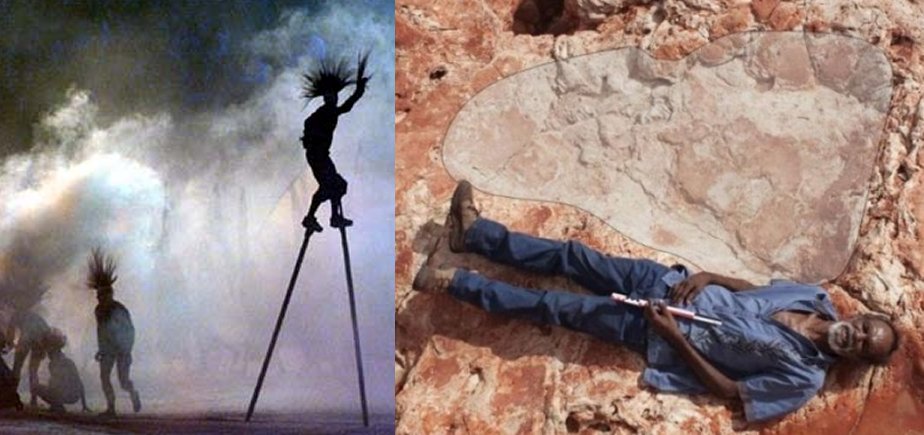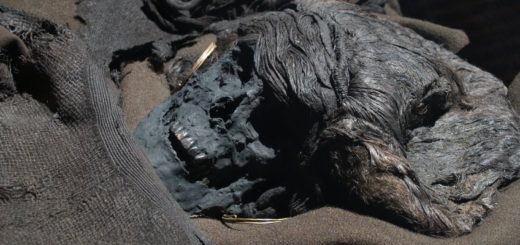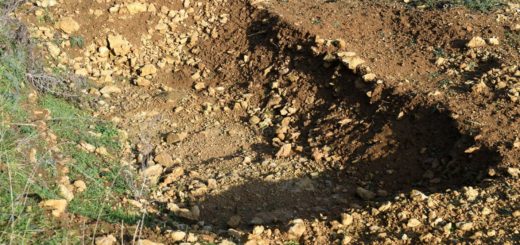Aboriginal Creation Story Of Marala Was True – World’s Largest Dinosaur Footprints Confirm Ancient Creation Myth
– World’s largest dinosaur footprints have been discovered in remote Kimberley region of Western Australia. Dubbed “Australia’s Jurassic Park”, footprints belonging to 21 different dinosaurs have been identified at the site so far.
One of the footprints measures nearly 5 feet 9 inches (1.75 meters). It was made by a sauropod and it is believed to be the largest dinosaur track ever recorded.

The discovery does not only give us a better understanding of the history of dinosaurs, but it also confirms the Aboriginal creation story and the journey of a Dreamtime creator being, called Marala, the Emu man.
Many Indigenous Australians also refer to the Creation time as “The Dreaming”. According to Aboriginal belief, all life as it is today – Human, Animal, Bird and Fish is part of one vast unchanging network of relationships which can be traced to the great spirit ancestors of the Dreamtime.
In ancient Aboriginal myths, Marala is described as a mythical being. He was a lawgiver and responsible for giving people code of conduct for good behavior need to keep things in balance. Marala was an Emu Man and he left his impression on the sky and on the sand.
During his journey through the Song Cycle from south to north as well as in and out of the sea, Marala left behind three-toed tracks. He also left behind the grooved impressions of his tail feathers when he sat down to rest and create his law ground. Today, three-toed dinosaur tracks that are assigned to Megalosaurus broomensis, a theropod and impressions of cycad-like plants serve as evidence of Marala’s journey as narrated in the Song Cycle.
According to Dr Steve Salisbury from the University of Queensland, the diversity of the tracks around Walmadany (James Price Point) is extremely significant, forming the primary record of non-avian dinosaurs in the western half the continent and providing the only glimpse of Australia’s dinosaur fauna during the first half of the Early Cretaceous Period.
Dr Salisbury and his team have dedicated more than 400 hours to investigating and documenting the dinosaur tracks that extend along the coast and then inland for 450 km. All the dinosaur tracks were found in 127 to 140 million-year-old rocks.



 Creators of mankind
Creators of mankind Description of “Tall white aliens”
Description of “Tall white aliens” Where they came from?
Where they came from? About hostile civilizations
About hostile civilizations The war for the Earth
The war for the Earth “Tall white aliens” about eternal life
“Tall white aliens” about eternal life Video: “Nordic aliens”
Video: “Nordic aliens” Aliens
Aliens Alien encounters
Alien encounters The aliens base
The aliens base UFO
UFO Technology UFO
Technology UFO Underground civilization
Underground civilization Ancient alien artifacts
Ancient alien artifacts Military and UFO
Military and UFO Mysteries and hypotheses
Mysteries and hypotheses Scientific facts
Scientific facts


















